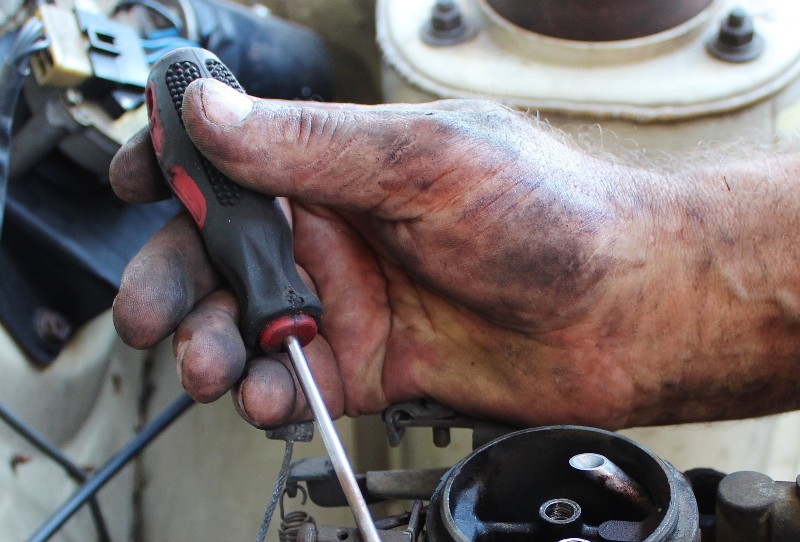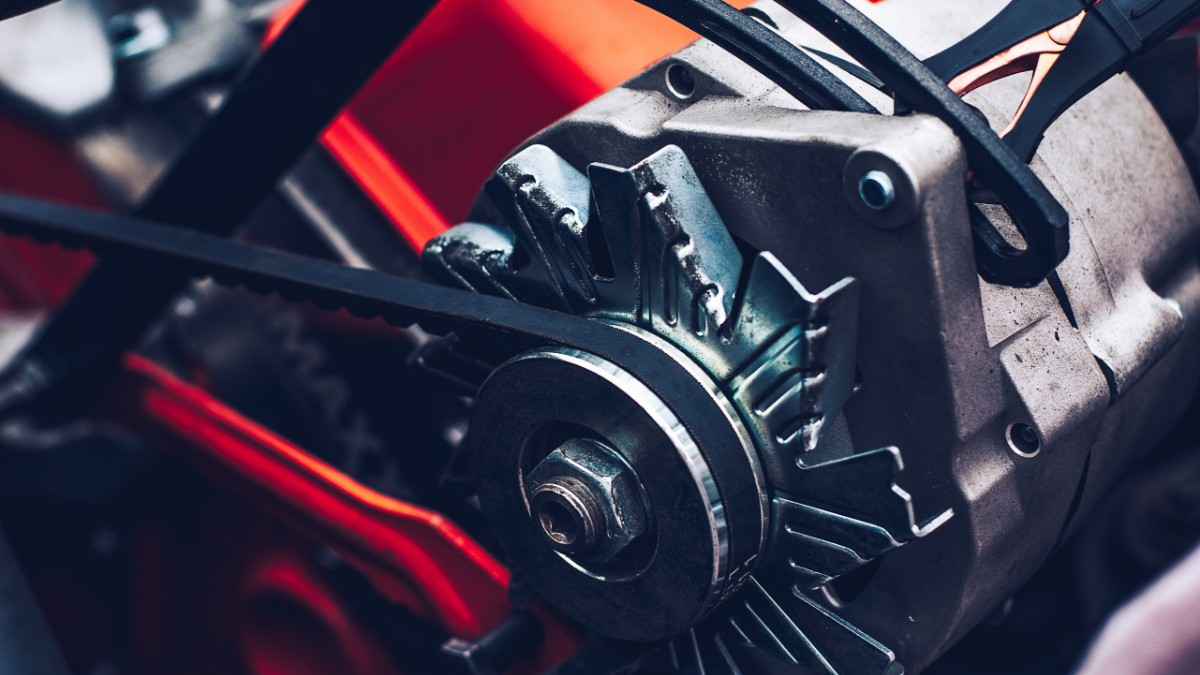The alternator charges your car battery. It generally doesn’t require much maintenance but regular checks are essential to be sure it’s in good working condition. Here’s an explanation of how to test the alternator with a screwdriver.
Your car is powered by a battery that is charged by an alternator. The car won’t start if the battery is drained. Testing the alternator regularly ensures it works properly to keep the battery charging. It also ensures that electrical components get the appropriate power to operate.
An alternator generates electricity from the mechanical energy of the car. The energy powers various electrical components including the lights and AC. It also charges the battery. The lifespan of your battery depends on the alternator’s performance.
What Is An Alternator In A Car?
An alternator is a device that charges the car battery. It produces electricity for charging the battery and powers all electrical components. The alternator is a rotary device for converting mechanical energy into electrical energy to produce alternating current (AC)
It connects the battery and engine while creating power for the vehicle. When you turn on the lights, you hear a clicking sound from the alternator at work. The alternator produces electricity using the same mechanism as the dynamo or generator.
How Does The Alternator Work?
The device has a pulley that spins when you turn on the engine. It spins the rotor made of an iron core and wire coil. A field current develops flowing through the wire coil. It produces a magnetic field that develops an alternating current.
An alternator needs a voltage regulator for the production of appropriate power to charge the car battery. The regulator makes the alternator produce and move voltage regulators to the battery terminals.
AC from the magnetic field turns into direct current (DC) thanks to diode bridges. The DC charges the battery. An alternator and regulator make up the induction motor. More current generated leads to a stronger magnetic field and higher DC to charge the battery.
What Happens When The Alternator Fails?
You’re likely to end up with a hefty repair bill when the alternator doesn’t work properly. The battery is likely to lose charge and eventually fail. Your car won’t start and you’ll end up stranded. Testing the alternator is essential to ensure it’s working properly.
How Do You Tell A Malfunctioning Alternator?
The alternator charges the car battery. So, you must know the signs when it’s malfunctioning. Here are the signs to look out for.
- Flickering or dimming headlights, dashboard lights, and other electricals.
- The engine bogs down like it’s not getting enough power.
- The battery fails to hold charge leading to frequent charging.
- AC malfunctions or blows less than the maximum.
- Battery lights stay on when you turn on the ignition.
- Car stalls or produces unusual noises.
How Do I Test An Alternator Using A Screwdriver?
Your safety is very important before you test the alternator using a screwdriver. More to that, you must have appropriate material to ensure that you do the job right without harming yourself.
Here are the essential items you need:
- Insulating gloves
- Wheel chocks
- Screwdriver
- Safety glasses
- Rubber hose
- A digital millimeter or voltage regulator
Now let’s explain the simple steps to test the alternator using a screwdriver.

Insert The Key Into The Ignition
The first step is to put the key into the ignition. Twist it to arrive at the ignition without starting the engine. Get into the driver’s seat and put the car key on the ignition switch. Maintain the key inside without starting the engine then unlock the hood.
Safe The Hood
Shift the hood after unlocking it to access the engine and the alternator. Test the hold by dragging it softly. The rod makes the hood safe so use it for unlocking. Cars with an electrical system don’t have a rod and the hood automatically stays safe.
Open The Hood
You must open the hood to get to the alternator. It’s located near the engine. The latch is handy to make the hood safe.
Locate The Alternator
Look for the alternator inside the engine. Afterward, place the screwdriver near the alternator pulley bolt. You can easily find this at the front of the alternator.
Turn The Key On
Shift the key on where the car is not on and the dashboard warning lights are on. Place the screwdriver near the bolt. You’ll likely feel a strong magnetic field powerfully dragging the screwdriver. It’s an indication that the alternator works properly.
Don’t use the screwdriver if the bolt is corroded. Or else you’re likely to get a fake effect. First, remove the rust before going ahead with the procedure following the steps highlighted above.
Put The Screwdriver Near The Alternator
Turn the car key without starting the car. Get the screwdriver tip near the nut on the alternator pulley. The presence of magnetism with the screwdriver getting pulled closer to the alternator is an indication that it’s working properly. If not, the alternator isn’t in good condition.
Can A Car Work With A Bad Alternator?
The can may still run for a short time with a bad alternator by using power from the battery. However, electrical parrots including lights, AC, and engine control units are likely to drain it sooner.
Your car won’t have the appropriate power to function properly. It compromises your safety, especially when on a long journey. The rule of thumb is to test the alternator and battery periodically at least every four to six months.
How Do I Protect The Alternator?
Alternators don’t generally need a lot of maintenance because they are extremely durable and last many years. However, regular checks are necessary and periodic maintenance of your vehicle to keep both in great shape.
Keep the engine safe and close to the alternator as possible. The engine protective cover must be intact to prevent road splashes from reaching the alternator and engine. Additionally, deal with any oil leaks immediately since they have the same effect.
In Light Of The Above Facts,
The alternator is essential in charging the car battery. Its performance impacts battery life. Regular checks are necessary to ensure the alternator is in good shape. Fortunately, you can test it at home using a screwdriver as highlighted above.

